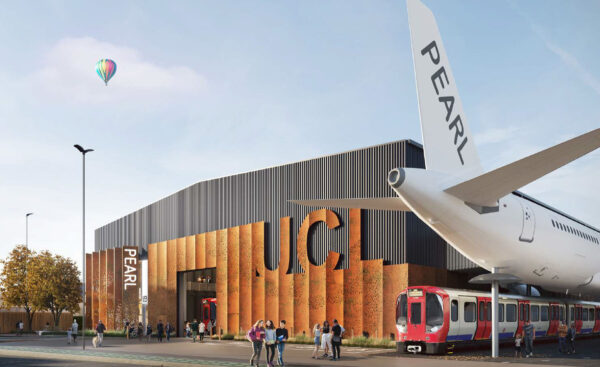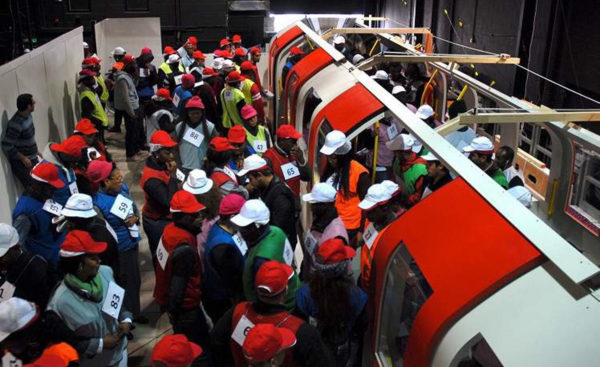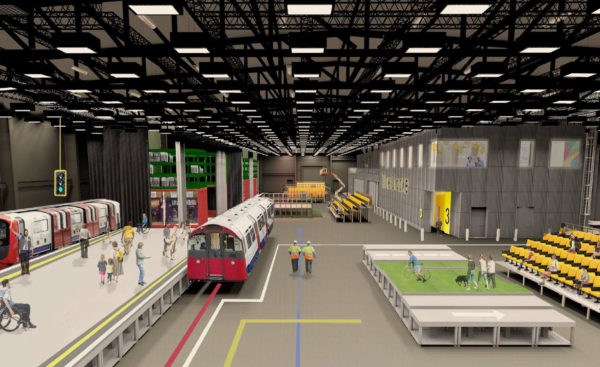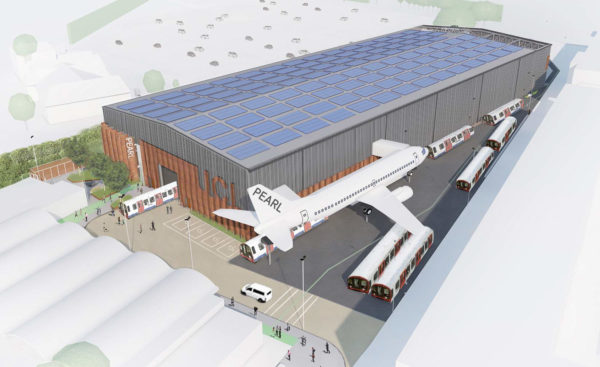A large building in East London will soon be filled with old tube trains, and an old aeroplane, as part of a UCL laboratory.
To be completed in 2021, PEARL (Person-Environment-Activity Research Laboratory) will be the only space in the world where researchers can precisely simulate large-scale environments such as train stations or town centres and test people’s reactions to them in detail.
The research centre will build on the work of PAMELA (UCL Pedestrian Accessibility Movement Environment Laboratory) which has informed the design of proposed new London Underground trains to make them more accessible for disabled people, and identified ways of improving infrastructure for people with dementia.
At 14 metres tall and with 600 square metres of reconfigurable floor space, PEARL will have the ability to simulate scenarios, recreating smells such as gas leaks and sounds ranging from the tiniest bird song to massive explosions.
Planning permission was granted by Barking and Dagenham Council last week.
UCL says that it expects to obtain 4 to 8 decommissioned tube or train carriages for use in PEARL experiments. These will normally be stored in the yard space outside the building and brought into the lab space through large doors at either end when required. PEARL also plans to use a selection of the carriages as meeting / work spaces.
The facility, located near Dagenham East tube station, will also be one of the core laboratories in the UK government’s EPSRC-funded UK Collaboratorium for Research on Infrastructure and Cities (UKCRIC).











This is great news and an example of exciting innovation born of joined~up thinking about which we here hear precious little.
Any idea can be exposed to the crucible of reality be it aeroplane-sized or neurological study.
Clunky name aside it’s a classic in that it’s simple and one of those ‘Why didn’t we think of this before?’ solutions.
And they could not afford to rebuild the Petrie Museum111
This is only sort-of-new. A very, very long time ago (OK, the late 1980s) London Transport ran a whole series of trials to test train capacity and speed of entry/exit to help design both the Central line and DLR fleets. The Central line tests used a mix of carriages parked in the bay platform at Woodford, causing much bafflement from regular commuters, while the DLR ones took place at Poplar station during (I think) an engineering works closure. Most of the people acting as passengers were recruited via the local Job Centres, and they got enough of a financial reward to make it worthwhile – there were hordes of them, split into ‘teams’ who were asked to get on, then get off, in various combinations and scenarios. The test to derive the actual figure for how many people could fit into a crush-loaded train would probably not survive today’s safety culture…..
Being next to the ‘real’ railway seemed to make people behave fairly similarly to how they would normally – standing blocking the doors, trying to get on at the same door as all their mates, etc. I’m not entirely sure that they’ll respond ‘realistically’ when they’re in a big shed in Dagenham. But I expect the researchers have thought of that!
To be fair, I didn’t say the idea of this sort of research was itself new — as studying the movements of crowds has been a science for well over a century.
The Building Research Establishment at Garston Hertfordshire have done various tests with tube trains and a plane fuselage in the past. I was one of the “volunteers”.